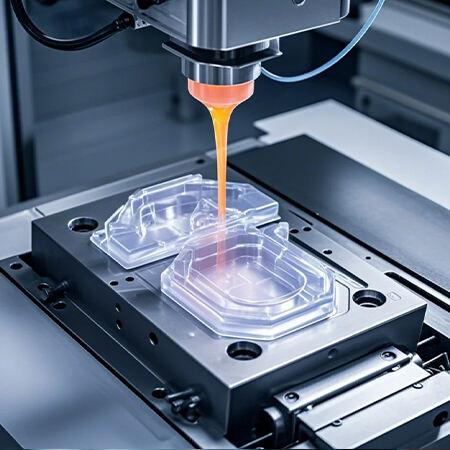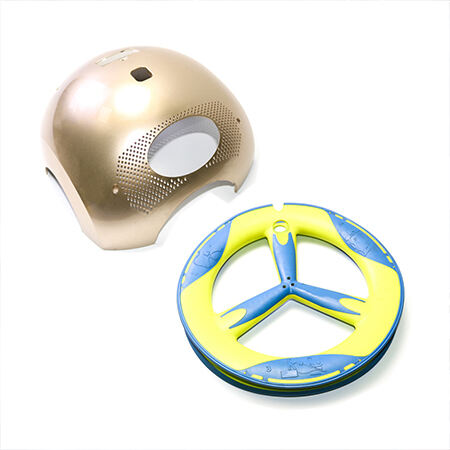صناعة السيارات تتبنى النماذج الأولية السريعة لتحقيق تطوير المنتجات بشكل أسرع في عام 2025
يناير 2025 - تخضع صناعة السيارات لتحول كبير حيث تزداد اعتماد الشركات المصنعة على تقنيات النمذجة السريعة لتسريع دورة تطوير المنتجات. مع استمرار زيادة الطلب على الابتكار وسرعة الوصول إلى السوق، أصبحت النمذجة السريعة أداة أساسية للصانعين الذين يسعون للبقاء في المقدمة في سوق عالمي تنافسي للغاية.
التحول نحو النمذجة السريعة - باستخدام تقنيات متقدمة مثل الطباعة ثلاثية الأبعاد، التصنيع الإضافي والنمذجة الرقمية - قد غير بشكل جذري كيفية تصميم شركات السيارات واختبار منتجاتها وتحسينها. في عام 2025، أثبتت هذه التقنيات أهميتها في تسريع مرحلة النموذج الأولي، وتقليل التكاليف وتعزيز جودة المنتج.
تغيير اللعبة في التصميم والاختبار
يتيح النمذجة السريعة للمصنعين في قطاع السيارات إمكانية إنشاء نماذج مادية للقطع والمكونات مباشرة من التصاميم الرقمية في وقت قصير، مما يقلل بشكل كبير من الوقت اللازم للاختبار والتكرار. بدلاً من الاعتماد على الطرق التقليدية، التي غالباً ما تستغرق أسابيع أو حتى شهوراً لإنتاج النماذج، يمكن لتقنيات الطباعة ثلاثية الأبعاد وغيرها من تقنيات النمذجة السريعة إنتاج نماذج ذات دقة عالية خلال ساعات أو أيام فقط.
«الآن أصبح بإمكاننا الانتقال من التصميم إلى النموذج في غضون أيام، وليس أشهرًا»، قال ذلك سوфи تشانغ، مدير تطوير المنتجات في أحد أكبر صانعي السيارات. «هذا يسمح لنا باختبار وتحسين وتأكيد التصاميم بشكل أسرع، مما يساعدنا على تقليل الوقت الذي يستغرقه إدخال سيارات جديدة إلى السوق».
مع النمذجة السريعة، يمكن للمصنعين تقييم وظائف ومدى توافق وشكل المكونات والأنظمة قبل الالتزام بالإنتاج على نطاق واسع. وهذا لا يسرع عملية التطوير فحسب، بل يقلل أيضًا من الأخطاء المكلفة وتعديلات التصميم في المراحل اللاحقة.

تقليل التكاليف والمرونة في التصميم
يُظهر تصنيع النماذج الأولية السريع أيضًا أنه ابتكار يوفر التكاليف لشركات تصنيع السيارات. من خلال استخدام الطباعة ثلاثية الأبعاد وتقنيات التصنيع الرقمي الأخرى، يمكن للشركات المصنعة تقليل الحاجة إلى القوالب والآلات المكلفة وتغيير خطوط الإنتاج التي كانت ضرورية سابقًا لإنشاء النماذج التقليدية. بالإضافة إلى ذلك، يتيح تصنيع النماذج الأولية السريع إجراء تكرارات تصميم أكثر مرونة، مما يسمح للمصنعين بإجراء تعديلات على النماذج دون تحمل تكاليف إضافية كبيرة.
"المرونة في تعديل التصاميم بسهولة دون إعادة تجهيز مكلفة كانت ميزة كبيرة لنا"، قال ريكاردو موراليس، رئيس قسم الهندسة في شركة موردة للسيارات. "يسمح لنا ذلك بتجربة مواد مختلفة وتنويعات تصميمية دون القلق بشأن التكلفة العالية لتصنيع النماذج التقليدية."
تبسيط سلسلة التوريد
مع انتشار النماذج الأولية السريعة بشكل أكبر، فإنها تساهم أيضًا في تحسين كفاءة سلسلة التوريد. غالبًا ما شملت سلاسل التوريد التقليدية للسيارات فترات زمنية طويلة لتوريد الأجزاء والمكونات، مما أدى إلى تأخيرات في تطوير المنتج. من خلال استخدام الطابعات ثلاثية الأبعاد داخل الشركة أو التعاون مع مرافق النماذج الأولية السريعة المحلية، يمكن للمصنعين السيارات إنتاج الأجزاء بشكل أسرع، وحتى عند الطلب. هذا يقلل من الاعتماد على الموردين الخارجيين وأوقات الشحن الطويلة، وهو أمر ذو قيمة خاصة في ظل الانقطاعات الحالية في سلسلة التوريد.
«بتكامل النماذج الأولية السريعة في سلسلة التوريد الخاصة بنا، تمكنا من تبسيط الإنتاج وتقليل التأخيرات بشكل كبير»، قالت ليندا غارسيا، مديرة سلسلة التوريد في شركة سيارات دولية. «النماذج الأولية المحلية تُحدث تحولًا في كيفية إدارتنا لكل من النماذج الأولية وإنتاج الدفعات الصغيرة، مما يجعل سلسلة التوريد الخاصة بنا أكثر مرونة واستجابة».
تعزيز التخصيص والابتكار
النمذجة السريعة تُمكّن أيضًا من الابتكار الأكبر والتحوير حسب الطلب في قطاع السيارات. في عام 2025، تقدم شركات صناعة السيارات لعملائها خيارات شخصية أكثر، من تصاميم داخلية مخصصة إلى أجزاء خارجية فريدة. باستخدام النمذجة السريعة، يمكن للمصنعين إنتاج القطع المخصصة والإكسسوارات بسرعة لتلبية مواصفات العملاء الفردية.
«بات بإمكاننا إنشاء تصاميم فريدة ومميزة لعملائنا بفضل النمذجة السريعة»، قال توماس وبر، الرئيس التنفيذي لشركة تصنيع سيارات فاخرة. «سواء كان الأمر يتعلق بدفق لوحة القيادة المخصصة أو شبكة أمامية مصممة حسب الطلب، يمكننا تقديم حلول مبتكرة ومخصصة بشكل أسرع من أي وقت مضى».
فوائد الاستدامة
مع تعرض صناعة السيارات لضغوط متزايدة للتحول نحو ممارسات أكثر استدامة، يساهم التصميم السريع في الابتكارات الصديقة للبيئة. من خلال استخدام تقنيات التصنيع الإضافي، يمكن للمصنعين.optimize أجزاء أخف وزناً وأكثر كفاءة في استهلاك الطاقة، مما يقلل من البصمة الكربونية الكلية للمركبات. بالإضافة إلى ذلك، يمكّن الطباعة ثلاثية الأبعاد الشركات المصنعة من استخدام مواد مستدامة مثل البلاستيك القابل للتحلل والمركبات المعاد تدويرها في إنتاج النماذج الأولية.
«من خلال دمج المواد المستدامة في عملية تصميمنا السريع، نحن لا نقلل فقط من النفايات ولكن أيضًا نفتح الطريق أمام تصاميم مركبات أكثر صداقة للبيئة»، قال ذلك آنا لوبيز، رئيس قسم الاستدامة في أحد أكبر مصنعي السيارات.

مستقبل التصميم السريع في تطوير السيارات
في المستقبل، من المتوقع أن يستمر توسع دور النماذج الأولية السريعة في تطوير المنتجات السيارات. مع تقدم تقنية الطباعة ثلاثية الأبعاد، تزايدت تجارب صانعي السيارات مع مواد جديدة، بما في ذلك المعادن، والمركبات، وحتى المواد البيولوجية، لتحسين أداء مركباتهم ومستوى استدامتها.
يتنبأ الخبراء بأن الموجة القادمة من الابتكار ستشمل دمج الذكاء الاصطناعي (AI) والتعلم الآلي في أنظمة النماذج الأولية السريعة. يمكن لهذه الأنظمة التي تعمل بالذكاء الاصطناعي مساعدة في تحسين التصاميم تلقائيًا بناءً على بيانات الأداء الفورية، مما يؤدي إلى دورة تطوير منتجات أسرع وكفاءة أعلى.
«نحن نستكشف بالفعل أدوات تصميم مدعومة بالذكاء الاصطناعي والتي ستعمل جنبًا إلى جنب مع تقنيات النماذج الأولية السريعة»، قال إريك تشين، رئيس قسم التكنولوجيا في شركة أبحاث وتطوير السيارات. «الدمج بين الذكاء الاصطناعي والنماذج الأولية السريعة يمكن أن يسرع بشكل كبير ليس فقط عملية إنشاء النماذج الأولية ولكن أيضًا خط الزمن الكامل من التصميم إلى الإنتاج».
تحول تحولي لصناعة السيارات
ظهرت النماذج الأولية السريعة كقوة تحولية في صناعة السيارات. في عام 2025، وقدرتها على اختصار جداول زمنية التطوير، تقليل التكاليف، وتشجيع الابتكار جعلتها أداة لا غنى عنها للمصنعين الذين يسعون للبقاء تنافسيين في سوق متزايد السرعة والوعي البيئي. مع استمرار تطور التكنولوجيا، فإن النماذج الأولية السريعة مستعدة للعب دور أكثر أهمية في تشكيل مستقبل تصميم السيارات والإنتاج والتخصيص.


